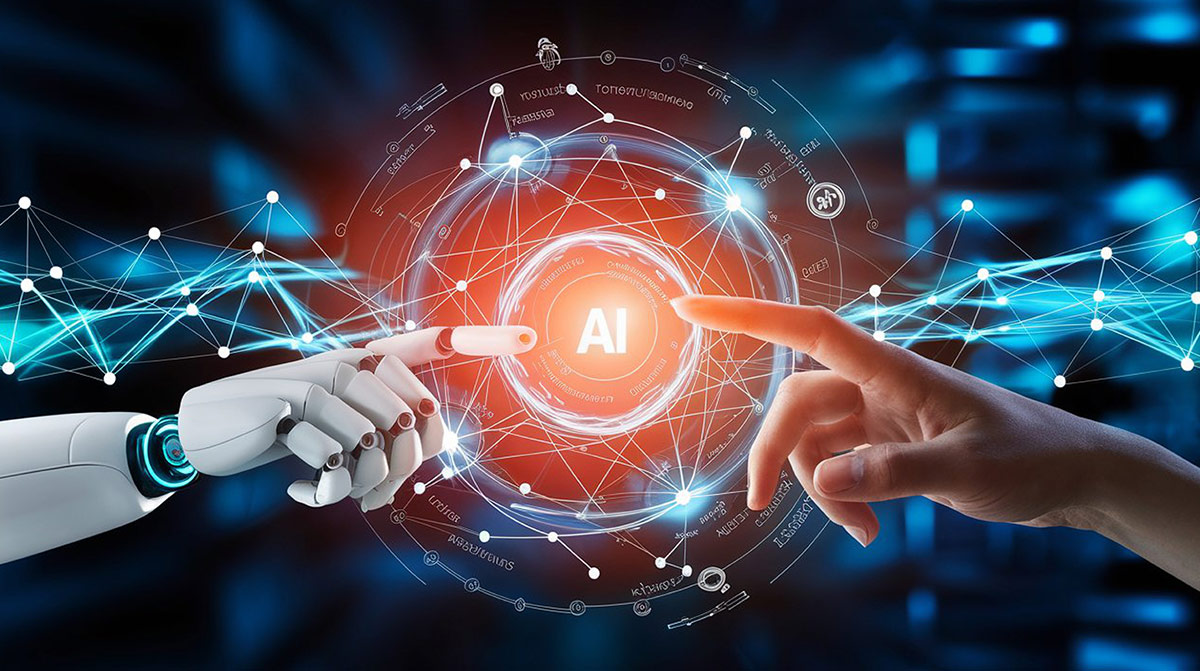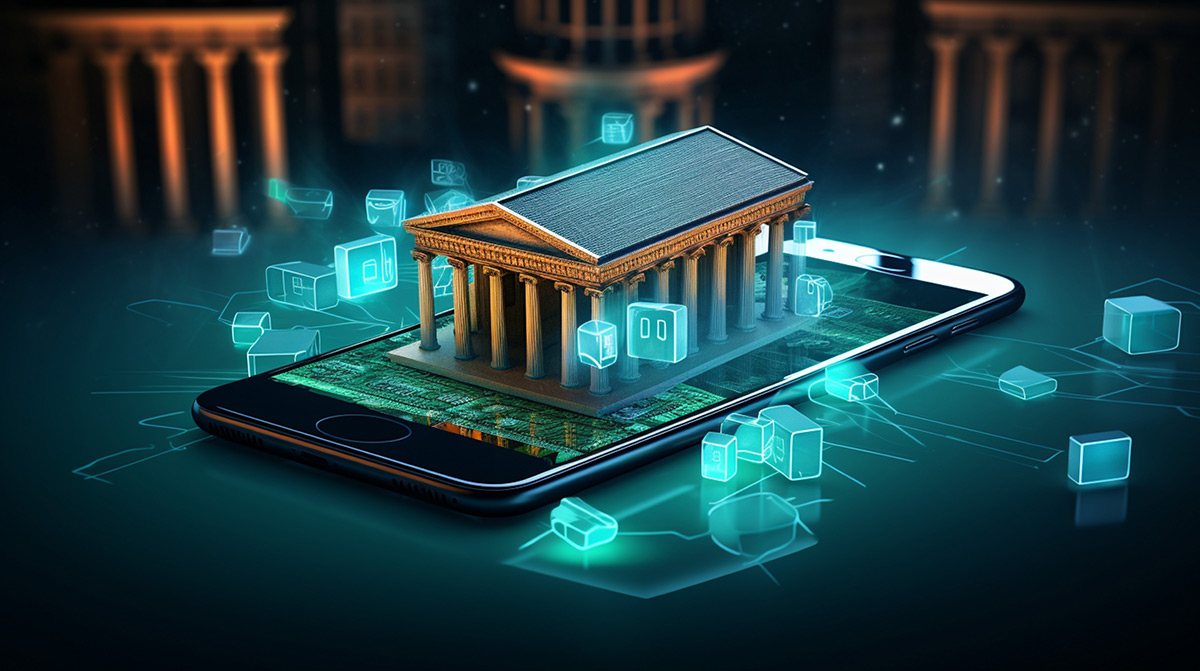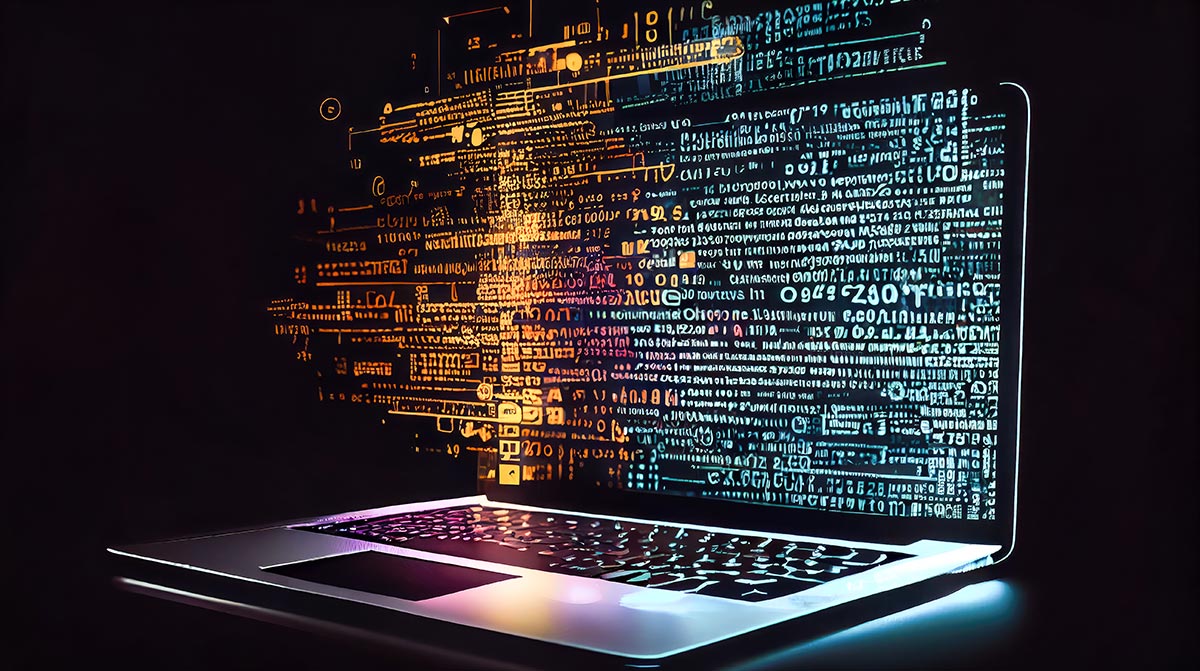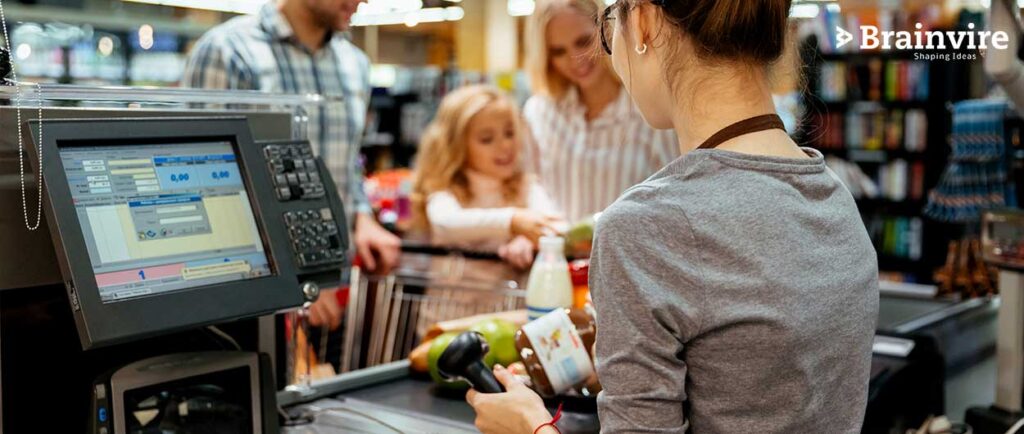
You enter a store looking for a new pair of jeans. Your smartphone pings as you go in, and you open it to see a map indicating where the brand of jeans you looked at online is on display in-store. You approach them, try them on, and stuff them into your bag.
You exit the store as soon as you’ve finished shopping. As you depart, sensors scan your things and add them up; the final price is then calculated using your mobile payment app.
What is IoT-Enabled Retail POS Management?
Smart retail point-of-sale systems do more than just process transactions; they track customer behavior, update inventory, and allow sales employees to execute transactions from anywhere in the shop.
For example, the shelf where you bought the jeans records your purchase and transmits it to a back-end inventory system, alerting the store manager to restock.
Thanks to the rise of IoT, which builds a network between internet-connected physical things, this experience is closer than you think. Physical devices that can connect to the internet will continue to grow in the coming years.

Understanding the role of IoT in PoS Systems
Electronically tracking things is an idea that has been around for a while, particularly in retail point of sale (POS). What’s new is that IoT technology is getting more widely used and sophisticated, and the advantages of using IoT for POS apps and analytics are growing more sophisticated.
Retail is intensely competitive, and retailers, especially with the rise of internet shopping, operate on razor-thin profit margins. Stores now have to compete with every other retailer on the planet, and they may even have to compete with their online brand. Retailers are eager to do everything that may offer them a competitive advantage, and as a result, POS is using IoT to boost sales revenues.

The Digital Transformation of Retail
Consumers used to browse fashion magazines in the pre-internet era, pick out an item they liked, and then go to the store to purchase.
Individuals and societies have entered the information age due to technological advancements over the last thirty years. When we consider the impact of digital technologies on our lives, the daily decision-making process and purchasing are two excellent examples of how things have evolved in recent years.
IoT can help retailers continue to close the gap left by 2020. Brick-and-mortar retailers could see a resurgence in consumer experience thanks to capabilities like edge computing, computer vision, and real-time analytics. To compete with the customer experience generated online, retail businesses will need to embrace IoT. The sustained investment in IoT strategies will differentiate and contribute to long-term success as retail moves toward digital transformation.

It’s been several years since retail IoT found its way onto the hype cycle, but retail’s interest hasn’t slowed down. As everyone returns to normal operations, these IoT tactics may boost physical retailers, allowing them to improve the shopping experience. IoT will continue to be a revolutionary force as long as retail firms follow through and do not quit these initiatives in the absence of a crisis.
Future Prospects for IoT
For several years, the Internet of Things has been fundamentally transforming the retail industry. IoT technology is increasingly being used for various purposes, such as gaining insights into customer behavior and product performance and applications relating to operational efficiencies for employees and consumers.
The adoption of IoT technology in the workplace has sparked significant investment—the global market for IoT in retail was valued at $22.36 billion in 2018 and is predicted to reach $69.25 billion by 2024.
The use of IoT Box in Odoo POS
The smart retailing environment, which is based on IoT connectivity, would help enterprises compete more effectively. The point-of-sale system is now more than just a payment processing instrument; it’s also a database of client information and retailing history. We can connect the POS devices to the IoT Box and configure it as previously described. The IoT Box can be used to link POS equipment such as printers, barcode scanners, scales, customer displays, cash drawers, and payment terminals.

Odoo 14’s IoT module has been enhanced to allow effective manufacturing industry automation, such as producing shipping labels and weighing items using weighing scales. IoT Boxes or integration devices that connect to the platform and IoT operated devices can be used in the Odoo IoT integration. Odoo’s IoT Box supports a variety of connecting options. The IoT Box is the hub or gateway that collects data from the devices and sends it to the platform, as discussed earlier.
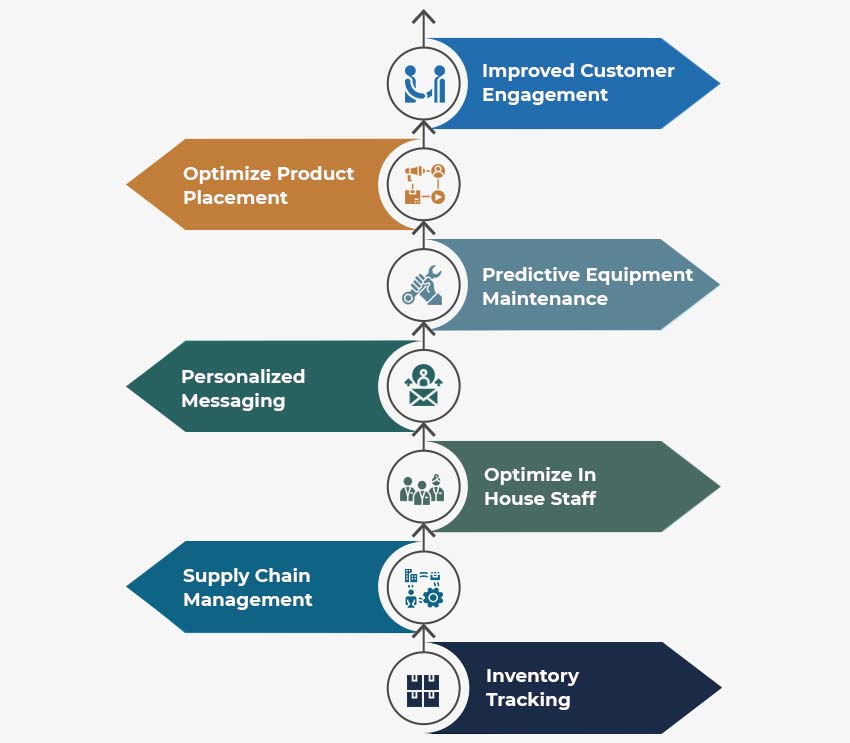
Even though most people perceive IoT connectivity as the future of manufacturing and supply chain management, one of the most straightforward and advantageous applications of IoT connectivity is at the point of sale.
We can connect the POS devices to the IoT Box and set up the IoT Box as previously described. The IoT Box may connect to POS devices such as printers, barcode scanners, scales, customer displays, cash drawers, and payment terminals.
Conclusion
Advanced technology solutions help businesses in achieving and maintaining a competitive edge in their respective industries. You can boost employee productivity while lowering costs, allowing your company to operate at a higher capacity and provide a better customer experience by utilizing the resources offered.
Brainvire provides top-rated Odoo ERP Development services and Odoo Migration Services to ensure the seamless execution of ERP systems. Our developers custom integrate selected modules from a stack of 10000+ applications as per business requirements and objectives.
Related Articles
-
The Beginning of AI & Enormous Benefits To Modern Business
What is AI? Complex API for smarter UI. AI is a system that runs on highly classified language & framework. Which is designed to function systematically in order to improve
-
IoT Applications In Banking: The New B2B And B2C Communications Method
Talking About IoT Applications In Banking: The New B2B And B2C Communications Method, The use of IoT in the Banking sector has not picked up the pace yet but it’s
-
Why Node.js is a Natural Fit for IoT Applications?
Talking About Why Node.js is a Natural Fit for IoT Applications? In order to leverage technology to activate business growth, one has to keep an eye on technological expansion. That

